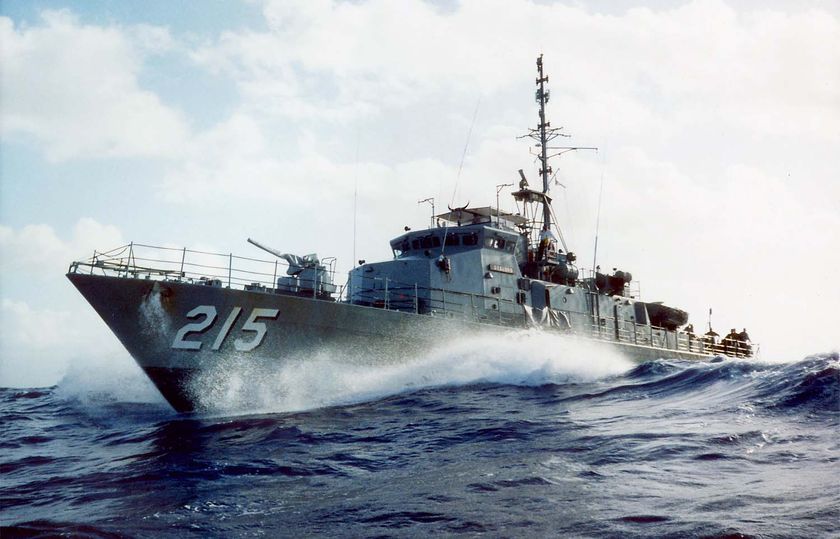Warships from 17 countries steamed into Sydney Harbour Friday for a nautical extravaganza marking the centenary of Australia’s emergence as an independent sea power.
Naval vessels from nations including China, France, Japan, Malaysia, Thailand, the United States and former colonial power Britain passed through the entrance of the famous harbor where they joined 16 tall ships from around the world.
The armada is part of celebrations to commemorate 100 years since the Royal Australian Navy’s fleet first entered the city’s waters.
It was on October 4, 1913 that seven Australian warships, led by HMAS Australia, first steamed into Sydney to be met by huge crowds, heralding the country’s independent sea power and emergence as a modern nation.
Until then, the Australian colony had been watched over by British vessels.
“It was the birth of the Royal Australian Navy in terms of the ownership of all of our ships but it meant something to the nation as well. It meant were a true nation, we had our own Navy,” Australian Navy chief, Rear Admiral Tim Barrett, told ABC radio.
“It was treated almost at the time as a demonstration of our nationship. It was important not just for the Navy but the nation itself.”
The flotilla was welcomed by a 21-gun salute from HMAS Sydney, at the head of seven Australian warships, before a ceremonial fleet review on Saturday led by Britain’s Prince Harry, Australian Prime Minister Tony Abbott and Governor General Quentin Bryce, the Queen’s representative.
The prince will be on a flying 36-hour visit and is expected to also hold a meet-and-greet with the public and attend an official function with Abbott at his Sydney residence Kirribilli House, on the harbour opposite the Opera House.
“It’s a once-in-a-lifetime, once-in-a-100-year event,” fleet director Captain Nick Bramwell said of the festivities, adding that about 1.4 million people were expected to watch.
“There’ll be approximately 8,000 sailors in town for the week, open days, fireworks, the fleet review, parades, so it’s a big week.”
According to reports, two Russian ships pulled out at the last minute because of tensions over Syria, while two Canadian ships also cancelled after colliding during a towing exercise
Sydney is playing host to a week of maritime celebrations, including aircraft fly-pasts, helicopter display teams, marching bands and firework displays, with many of the visiting ships open to the public.
Barrett said the international involvement was a sign of the times.
“We’re all mariners at heart,” he said.
“We like to work together when the opportunity arises. It shows each other our professionalism but it also helps us when we meet each other on the ocean.
“We understand each other and we remove some of the mistrust or concerns that might arise should we do something on the ocean.”
Outside the ceremonial events, many of the warships have been involved in joint training exercises before arriving in Sydney, including maritime security and aviation procedures.
“Maritime security is something that we really must protect and no nation can do that alone,” said Commodore Peter Leavy, co-director of the exercise.
“Our ability to work with our regional neighbors and friends is so critical.
“The training we get at sea both this week and after the fleet review means that this is not just a commemorative undertaking in Sydney,” he added.
“There is some really valuable training with navies that we don’t get to work with all that often.”










